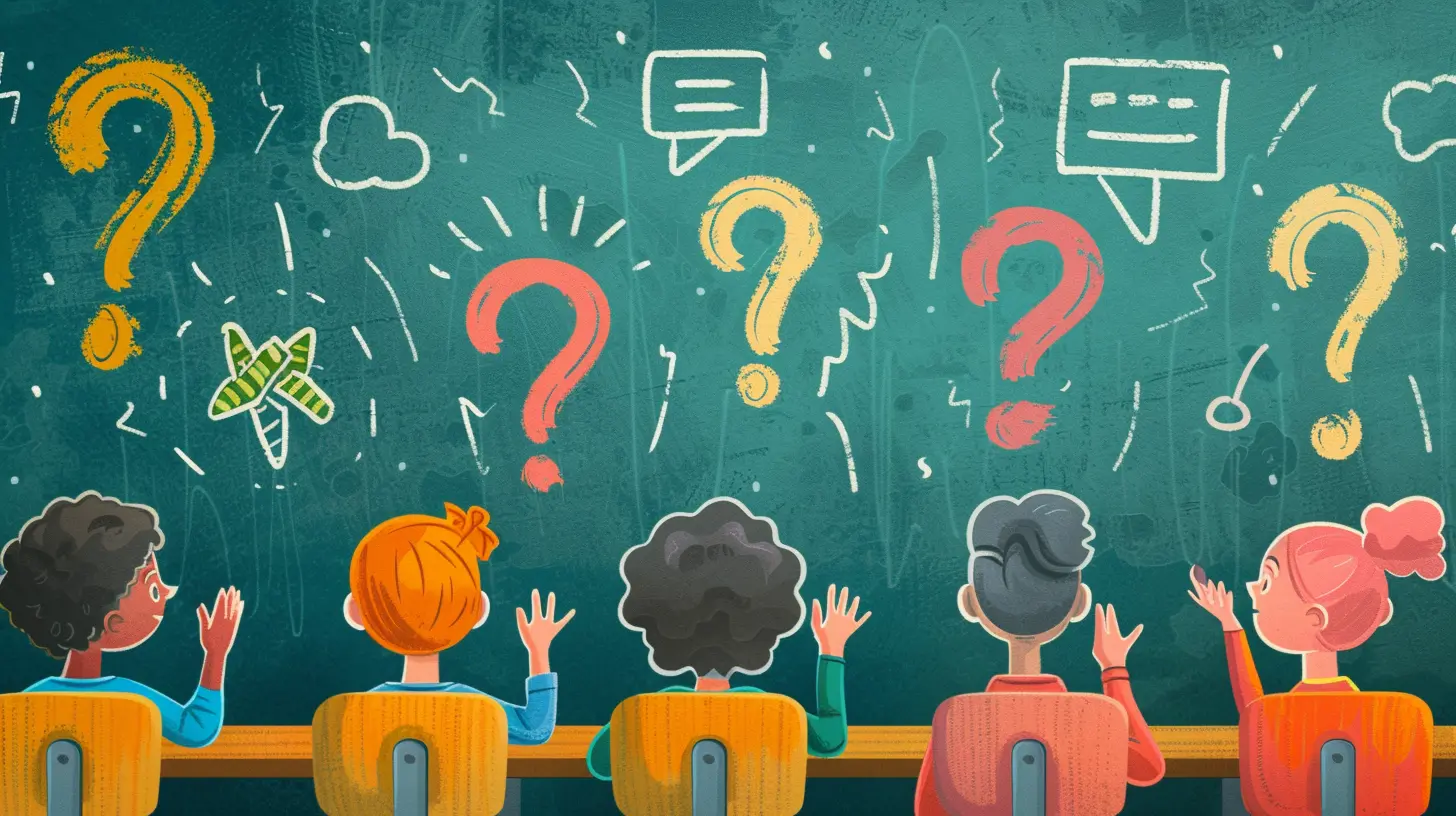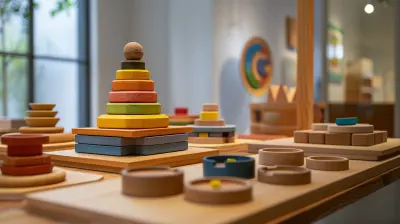18 May 2025
Ever felt like you're pulling teeth trying to get responses from students? Or maybe their answers are so off-track, you wonder if they were even in the same class? The truth is, the problem might not be with them—it could be the way the questions are framed!
Yes, crafting the perfect classroom assessment question is a bit like making the perfect cup of coffee—too weak, and it's useless; too strong, and it'll leave everyone jittery. So, let’s talk about the art of asking the right questions and making assessments more effective (and less painful) for everyone. 
Why Good Questions Matter in Assessments
Imagine buying a GPS that gives vague directions like, "Just keep going that way, I guess." That’s what happens when teachers ask unclear or ineffective assessment questions. The goal of assessments isn't just to test students but to understand what they’ve learned. Good questions can:- Gauge comprehension without confusion
- Encourage critical thinking instead of memorization
- Keep students engaged instead of zoning out
- Provide clear and actionable feedback
Now, let’s break down the science (and a little bit of the magic) behind crafting the right questions. 
The Different Types of Questions (And When to Use Them)
Not all questions are created equal. Some spark insightful discussions, while others make students stare blankly at you like you just spoke in ancient Greek. To avoid that awkward silence, here are some question types and the best time to use them.1. Closed-Ended Questions: The “Yes or No” Specialists
These are your multiple-choice, true/false, and “fill in the blank” type of questions. They’re great for checking basic facts but, let’s be real, they won’t exactly ignite a fiery debate in class.✅ Best used for: Quick knowledge checks, quizzes, and testing recall.
🚫 Avoid when: You want deeper discussions or critical thinking.
> Example: Is photosynthesis a process that occurs in plants? (Yes or no, no room for debate!)
2. Open-Ended Questions: The Thought Provokers
These are the golden tickets to meaningful discussions. They require students to explain, analyze, and defend their answers—no guessing their way through!✅ Best used for: Essays, discussions, and deeper understanding.
🚫 Avoid when: You need quick, definitive answers (like in a pop quiz).
> Example: How does photosynthesis impact the food chain? (Now, we’re talking!)
3. Higher-Order Thinking Questions: The Brain Gymnastics
These questions push students beyond memorization and encourage reasoning, evaluation, and problem-solving. They land in Bloom’s Taxonomy's upper levels—analyzing, evaluating, and creating.✅ Best used for: Projects, case studies, and real-world applications.
🚫 Avoid when: You’re just testing basic factual recall.
> Example: If photosynthesis suddenly stopped, what would happen to the ecosystem? (Now they’re sweating!)
4. Scenario-Based Questions: The “What Would You Do?” Moments
These questions put students in the driver’s seat, forcing them to apply what they’ve learned to real-life situations. They work wonders in subjects like science, history, and ethics.✅ Best used for: Problem-solving exercises, debates, and real-world connections.
🚫 Avoid when: You just need textbook answers.
> Example: If you were a climate scientist, how would you address climate change caused by deforestation? 
Crafting the Perfect Question: The Secret Sauce
So, what makes a question really effective? Think of it like baking the perfect cake—too many ingredients, and it’s a mess; too few, and it's bland. Here are the main ingredients:1. Clarity is King
If the question is so complicated that students need another question to understand it, we’ve got a problem. Keep it clear and simple.❌ Explain in detail the multifaceted nature of gravity as it pertains to terrestrial bodies in the solar system.
✅ How does gravity affect objects on Earth and in space?
2. Make it Relatable
Want students to actually care? Connect questions to their lives! Instead of a dull math problem, why not ask them how much their favorite celebrity would spend on luxury shopping in a year?❌ If John buys 4 apples and Sarah buys 5, how many do they have?
✅ If LeBron James buys 4 sports cars and Taylor Swift buys 5, how many do they have?
3. Encourage Thinking, Not Guessing
Avoid questions that students can answer with a lucky guess. Make them work for it!❌ Does social media impact mental health? (Yup, it does. Next!)
✅ In what ways can social media positively and negatively affect mental health? 
Common Question Pitfalls to Avoid
Even the best teachers can fall into the bad question trap. Here are some red flags to watch out for:🔴 The “Trick Question” Trap
If your students feel like they’re being set up, they’ll stop engaging.❌ Which of these is NOT a reason why the economy functions? (Cue confusion.)
✅ What factors contribute to a strong economy?
🔴 The “Way Too Broad” Disaster
Vague questions lead to vague answers.❌ Tell me about the Renaissance. (Umm… everything?)
✅ What were the key contributions of the Renaissance to art and science?
🔴 Leading Questions
These sneakily guide students toward a desired answer instead of letting them think critically.❌ Wouldn't you agree that Shakespeare was the greatest playwright of all time? (Well, what if I like Molière?)
✅ How does Shakespeare’s work compare to other playwrights of his era?
Making Assessments Fun (Yes, It’s Possible!)
Assessments don’t have to be painful. With a little creativity, they can be engaging and even fun. Here are some clever hacks:- Gamify It – Turn assessments into quizzes, competitions, or escape-room-style challenges.
- Let Students Ask the Questions – Flip the script and have them create their own quiz for classmates.
- Use Real-World Scenarios – Tie questions to pop culture, trending topics, or student interests.
Conclusion: The Power of the Right Question
Asking the right question is an art. It’s about balancing knowledge checks with meaningful engagement. Whether through open-ended debates, scenario-based problem-solving, or gamified quizzes, the way educators frame their questions can make all the difference between passive learning and active engagement.So next time you stare into a sea of blank faces, wondering why no one’s responding, take a step back. Maybe, just maybe, it's time to tweak those questions and watch the magic happen!








Fern Diaz
This article beautifully highlights the importance of crafting thoughtful questions in assessments. As educators, our ability to foster critical thinking and engagement hinges on inquiry. Thank you for sharing these valuable insights; they will surely enhance our teaching practices!
November 12, 2025 at 12:29 PM